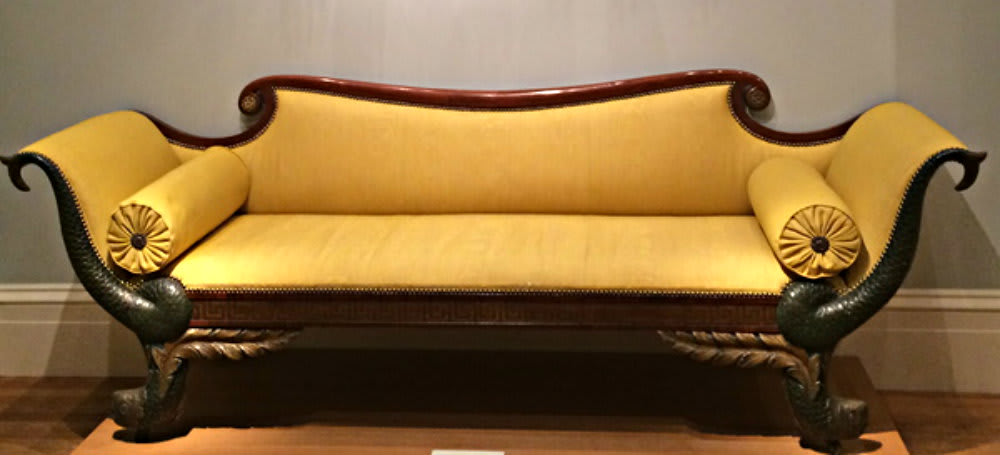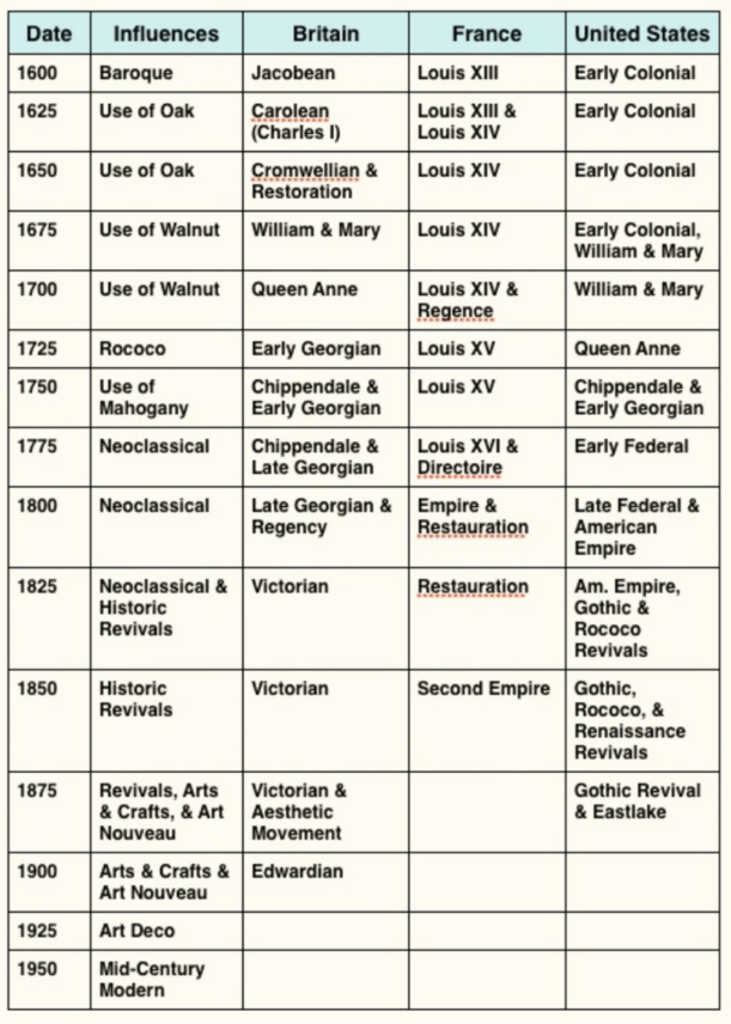Ever Get Tongue-Tied Trying To Describe An Antique? This Handy Period Table May Help!
We all love antiques but most of us can get tongue-tied when we start trying to describe them, when we try to put them in a stylist Period.
We all love antiques but most of us can get tongue-tied when we start trying to describe them, when we try to put them in a stylist Period. People who sound like they know what they are talking about may utter things like “Late Empire,” or “Rococo,” or “Clearly Post-Modern with a hint of Biedermeier.” We may think we know what “Victorian” is, but then get wobbly when “Eastlake,” or “Gothic,” arrive.
Obviously we need a timeline or chart…and one broken down by country. In the United States we don’t call the style periods by the names of presidents. In England & France, however, the periods are generally known by the name of the monarch — or at least until there was a revolt. It’s all wrapped up in history and, often, a yearning for the idealized past.

There are some influences, especially in more modern times, that have cut across national borders. The Arts & Crafts Movement, Art Nouveau, Art Deco and Modern appear in most countries about the same time, popularized by international exhibitions, shows, publications and mass media.
Below is just a simple table to get us started, looking only at Britain, France and the United States. The dates are general and the categories are broad. Readers who are interested in more precise dates and categories may want to see Judith Miller’s timeline in her important book Antiques Investigator (DK Publishing, 2009, pages 224-227).
The Metropolitan of Art’s Heilbrunn Timeline of Art History can enable readers to become absorbed in how art as a whole fits into shifts in social and political cultures. Or, for a fast look at furniture periods online, check out Antique Trader.
Here’s a simple table of Antique Style Periods:

Other countries, of course, had recognized style periods with antiques that are now prized. Sweden’s Gustavian period ran from about 1755-1810. Germany’s Empire, Biedermeier, and Historismus periods preceded their famed Art Deco and Modern.
In all countries we know that people in the countryside, including many of our own ancestors, or in religious or utopian communities created their own styles. In the United States we had the Shakers, the Roycrofters, and all kinds of practical, regional artisans.
It’s all about history and what motivated kings and commoners, craftsmen and artists and philosophers. And it’s about what each of us likes today.
Readers who are interested in learning more about the stylistic characteristics of each period can find a wealth of information at libraries, in the antiques section of bookstores, in museums. and online. Following the major auction houses and reviewing their online catalogs can help greatly. For example, Christies has a good short guide showing examples of American furniture periods. Our classic “go to” book for furniture styles, makers and periods is Joseph Aronson’s The Encyclopedia of Furniture (Clarkson Potter Publishers, 1965). For fun reading, Antiquing for Dummies, the Reference for the Rest of Us (Wiley Publishing, 1999) shouldn’t be ignored. Its chapter on periods is called “God Save Queen Anne: Basic Furniture Styles.”
SKM: below-content placeholderWhizzco for DOT

